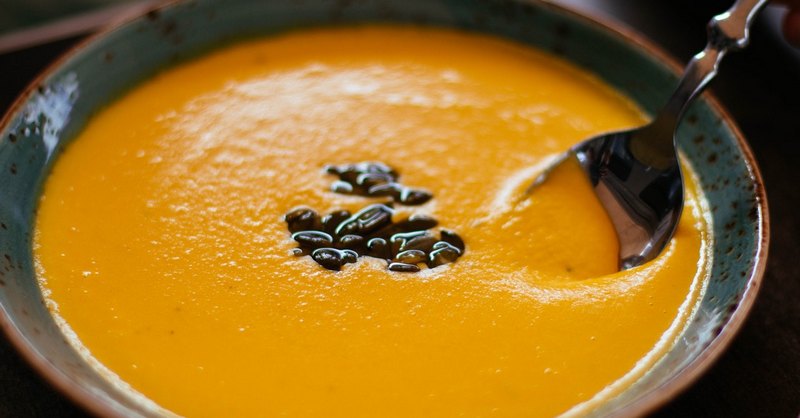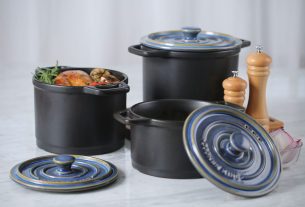Cooking soup in large batches is the best thing to do, it will be enough for a lot of people to eat at once and you will have leftovers to use in subsequent days. The truth is that you are unlikely to want to eat soup meals three times in one day for weeks to come, freezing the leftovers is still the best way out.
In almost all kitchens, you are likely to find different sizes and shapes of Tupperware and a lot of people are not sure whether or not it is suitable for freezing their soup. Tupperware is suitable to be used for freezing your soups, you just need to know a few tips to ensure that the soup freezes safely and perfectly reheat.
7 (Seven) Steps To Freezing Soup In Tupperware
-
The soup should be placed inside the freezer on the day you cooked it.
Most times, you will know you will have leftovers before you finish cooking, you can save a lot inside the fridge if you will be eating it within days after. The rest can be taken into your freezer so that the freshness can be maintained. The meats and vegetables will soak up the liquid the longer you allow it to sit.
It is wonderful for the flavor but it is not too good for consistency. The goal is to ensure that the components of the dish individually retain their integrity and you will do this by freezing it perfectly after you have cooked and allowed it to cool. Once you want to eat, it will look like a fresh batch that you just made.
-
The soup should be stored in meal sizes individually.
It is either you store it in a single serving or the amount you will reheat for one meal for the family. It is not appropriate to throw a whole pot containing soup into your big container and then you hope it will freeze correctly. The soup would freeze and then reheat evenly more the smaller your container size. Furthermore, once you have frozen and defrosted your soup once, you are not allowed to refreeze any leftover again. The rest should be kept frozen.
-
Ensure you use a freezable Tupperware.
The ideal Tupperware to use is the ones with snowflake icons on the containers. They hold up excellently well even when they are frozen and thawed regularly. All plastic containers have not been made equal, many of them will crack after they are chilled, you should try and find the snowflake. The Tupperware you should get should not stain and should be airtight, liquid, and be stackable. It should be BPA-free too.
-
Ensure the soup cools down fully before you put it inside the Tupperware.
A lot of people are aware they should not place hot food into the freezer directly to avoid the potential risk of bacterial growth, you should also know that you should not put hot foods into your Tupperware containers directly. Most of the plastic containers you will find around are made BPA-free, however, to be on the safe side, don’t heat your plastic containers because it may lead to chemical leaching into the food.
-
Ensure the soup has the space to grow.
Usually, food expands when frozen because the state of the water changes, it will change from liquid, then crystal, and then solid, the soup will become bigger in the process. Soup usually tends to expand more than any other food because there is a high amount of water contained in it. It is normal, but try to ensure you leave enough room within the container for the expansion to take place without the container cracking or the lid being pushed off.
-
Top your soup with plastic wrap.
Protect the soup by using a plastic wrap to top the soup, this will allow the soup to naturally expand. The seal is not compulsory to be perfect, but the topmost layer should be protected from the air contained in the additional space of the container.
-
Note this about noodles.
When you freeze and reheat noodles, they do not hold up well. If you want to make noodle soup to freeze, cook the noodles separately. The trick is to cook only the amount you want to eat immediately, freeze the soup without the noodles, and use it when you want to reheat the soup.
How To Reheat your Soup Frozen Inside Tupperware
Broth-based vegetable and meat soup can be easily reheated and there are different methods you can use depending on time constraints and your preferences. Irrespective of how you want to reheat it, you need to first take the soup away from your Tupperware container.
Instant Pot
The instant pot method is the easiest and quickest method you can use to reheat the frozen soup. Place your frozen soup inside the instant pot, use the setting of the pressure cooker, and set for up to 5 minutes. The only disadvantage of using the instant pot is that it is not suitable to reheat cream soups.
You will have to be extra careful to reheat the cream-based soup. Milk will usually thicken when it is frozen, however, if you can be patient, it will come back. You should allow the cream soup to thaw overnight within the fridge and then allow them to warm under low heat, stirring often until the desired consistency and temperature are gotten.
Stovetop
Using a stovetop is an easy method, all you need to do is to empty the frozen soup inside your pot and then add an inch of water into the bottom of the pot for your frozen soup not to burn when it heats. Use a lid to cover the pot and begin to heat on low to medium. Periodically stir the soup as it defrosts and once it is hot to your liking, serve it.
Microwave
Remove the frozen soup from the container and pour it into a large nice microwavable container. You can allow it to thaw inside the fridge or on the counter if you have the time. It will allow it to evenly reheat more and the veggies and meat will be kept fresh. Once you have defrosted it, use a plastic wrap or microwave cover to cover the soup so that it will not decorate the interior of the machine. Do things slowly between 30 and 45 seconds, ensuring you stir as it reheats.
Soup becomes heated up quite quickly and it is better if you don’t overheat it so that the meat will not be chewy and the veggies soft. If you don’t have the luxury of time, heat the soup directly from the freezer without thawing. Begin at one minute within the microwave and stir regularly as you heat. Add another minute if it is still frozen. Once it is almost defrosted, reduce the time to about 30 seconds so that it will not overheat. Don’t forget to ensure evenly heating by mixing after every time burst.
Mistakes You Should Avoid When Freezing and Reheating Soup
People make a lot of mistakes when freezing soups and the first one is that they forget they have frozen their food. Leaving the soup inside the freezer too long will result in the formation of tiny, small ice crystals on top of the soup. Also, in forms of minuscule in actual and real fibers of the food. The texture and the taste of the food will be affected when you thaw it. Ensure you eat the soup within three months of frozen.
Ensure the containers are not overfilled and it should not also be underfilled because the freezer burn will be more the more you allow air inside your container. Using a plastic wrap to cover the top will help, but the best thing is to only allow about one-inch of space at the top.
You should not also reheat your frozen soups inside a crockpot. Once you have cooked, frozen the soup, and then thawed, the slow cooker will not heat your soup quickly enough and this will give bacteria more time to thrive and survive.

Related Questions
Can you freeze soup in mason jars?
You can freeze soup inside mason jars, but the soup must be cooled completely before you place it inside your freezer. You should also ensure you have enough room for expansion of the soup without bursting or cracking the glass.
How do you prep and freeze soup for crockpot meals?
When you want to prepare and freeze soups for your crockpot meals, chop all of your vegetables and throw them inside a bag where they will be placed directly into the freezer to be frozen. If you want a better way, chop up the vegetables and then flash freeze them i.e. place them individually on your baking pan before your freeze them. They will remain in individual pieces thus way. You should then pack everything inside your freezer bag to freeze it. Raw meat can even be included as long as it can be frozen right away and cooked all together.
Are there any soups you can’t freeze?
Noodles do not freeze well. You also need to defrost cream soups and then reheat it carefully if you don’t want them to separate leaving the texture not to be overly pleasant. You can do it but it has to be slowly. The consistency of veggies like zucchini that have high water content will change and this is the same with starchy veggies such as potatoes. It does not mean the soups cannot be frozen, but it will give a more different texture.


